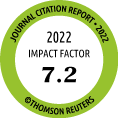|
Background:
Sputum induction is
a noninvasive method
for the assessment
of airway
inflammation.
Objectives:
To evaluate the
safety of the
procedure and the
clinical predictors
of successful
induction, and to
analyze the
relationship between
sputum cell counts
and clinical
features in
asthmatic and
nonasthmatic
children.
Methods: We
reviewed sputum
inductions performed
in our department
between 2006 and
2008 in individuals
under 18 years; 34
asthmatic and 24
nonasthmatic
children were
included. Sputum
induction was
performed with 4.5%
saline for 5-minute
periods with
salbutamol
pretreatment. The
most viscid portions
were selected for
processing.
Inductions which
were tolerated for
less than 4 minutes
or which produced a
sample volume of
less than 1 mL or a
sample with a
squamous cell
percentage of over
80% were considered
unsuccessful.
Results:
Sputum induction was
successful in 43
(74%) of the 58
children studied.
The total median
induction time was
15 minutes (interquartile
range, 10-15
minutes). Only 7
individuals (12%)
experienced mild
symptoms, which were
easily reversed with
salbutamol
inhalation in all
cases. The mean (SD)
overall PEF
variation with
induction was -2.5%
(7%), with no
significant
differences between
asthmatics and
nonasthmatics.
Asthmatics had
signifi cantly
higher total cell
counts (P=.007),
macrophages
(P=.033), and
relatively fewer
neutrophils (P=.003)
than nonasthmatics;
metachromatic cells
were rare and seen
only in asthmatics
(P=.026). We found a
positive correlation
between
exhaled nitric oxide
and sputum
eosinophil count
(r=0.363, P=.017).
Conclusions:
Sputum induction is
a safe, noninvasive,
and feasible
procedure that
allows the direct
assessment of airway
inflammation in most
children.
Key words:
Asthma. Safety.
Induced Sputum.
Children. Airway
inflammation.
Exhaled nitric
oxide.
|



